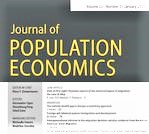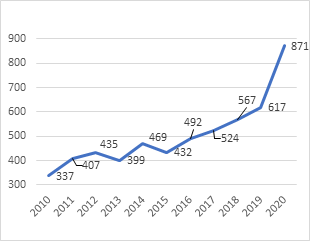A new paper published ONLINE FIRST freely accessible finds for Germany that among the self-employed, who generally face a higher likelihood of income losses due to COVID-19 than employees, women are about one-third more likely to experience income losses than their male counterparts. No comparable gender gap among employees is found.
The Global Labor Organization (GLO) is an independent, non-partisan and non-governmental organization that functions as an international network and virtual platform to stimulate global research, debate and collaboration.

COVID-19: a crisis of the female self-employed
by Daniel Graeber, Alexander S. Kritikos and Johannes Seebauer
Published ONLINE FIRST 2021: Journal of Population Economics
OPEN ACCESS and PDF.
GLO Fellow Alexander S. Kritikos

Author Abstract: We investigate how the economic consequences of the pandemic and the government-mandated measures to contain its spread affect the self-employed — particularly women — in Germany. For our analysis, we use representative, real-time survey data in which respondents were asked about their situation during the COVID-19 pandemic. Our findings indicate that among the self-employed, who generally face a higher likelihood of income losses due to COVID-19 than employees, women are about one-third more likely to experience income losses than their male counterparts. We do not find a comparable gender gap among employees. Our results further suggest that the gender gap among the self-employed is largely explained by the fact that women disproportionately work in industries that are more severely affected by the COVID-19 pandemic. Our analysis of potential mechanisms reveals that women are significantly more likely to be impacted by government-imposed restrictions, e.g., the regulation of opening hours. We conclude that future policy measures intending to mitigate the consequences of such shocks should account for this considerable variation in economic hardship.

EiC Report 2020
Journal of Population Economics
Access to the recently published Volume 34, Issue 3, July 2021.
LEAD ARTICLE OF ISSUE 3, 2021:
The safest time to fly: pandemic response in the era of Fox News
by Maxim Ananyev, Michael Poyker and Yuan Tian
OPEN ACCESS: Free Readlink – Download PDF
Ends;

